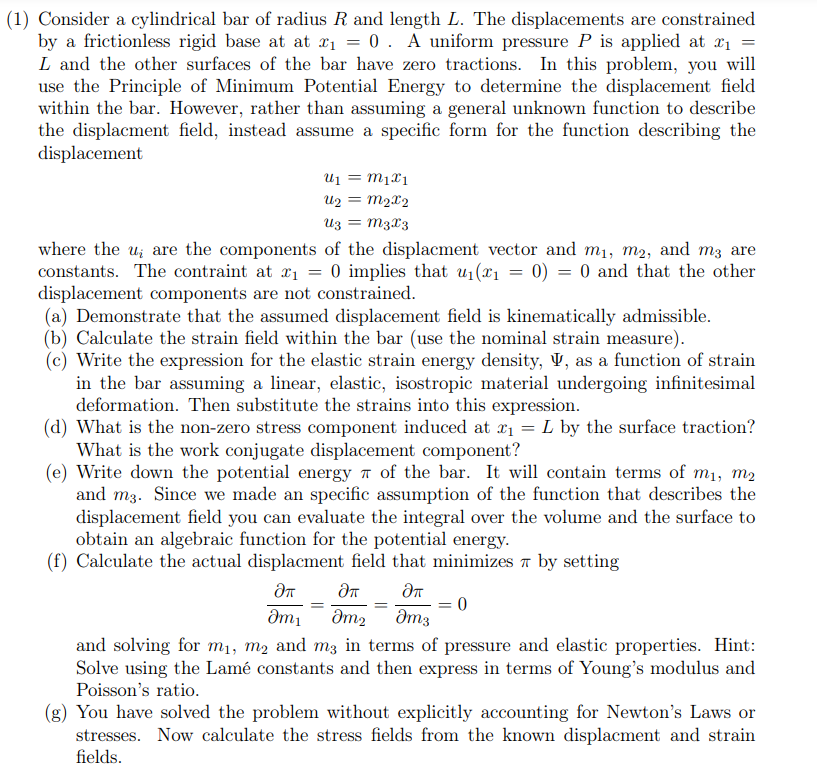Answered step by step
Verified Expert Solution
Question
1 Approved Answer
(1) Consider a cylindrical bar of radius R and length L. The displacements are constrained by a frictionless rigid base at at x =

(1) Consider a cylindrical bar of radius R and length L. The displacements are constrained by a frictionless rigid base at at x = 0. A uniform pressure P is applied at x = L and the other surfaces of the bar have zero tractions. In this problem, you will use the Principle of Minimum Potential Energy to determine the displacement field within the bar. However, rather than assuming a general unknown function to describe the displacment field, instead assume a specific form for the function describing the displacement u = m1x1 U2 = m2x2 13 = m3x3 where the u are the components of the displacment vector and m, m2, and m3 are constants. The contraint at x = 0 implies that u(x = 0) = 0 and that the other displacement components are not constrained. (a) Demonstrate that the assumed displacement field is kinematically admissible. (b) Calculate the strain field within the bar (use the nominal strain measure). (c) Write the expression for the elastic strain energy density, V, as a function of strain in the bar assuming a linear, elastic, isostropic material undergoing infinitesimal deformation. Then substitute the strains into this expression. (d) What is the non-zero stress component induced at x = L by the surface traction? What is the work conjugate displacement component? (e) Write down the potential energy 7 of the bar. It will contain terms of m, m2 and m3. Since we made an specific assumption of the function that describes the displacement field you can evaluate the integral over the volume and the surface to obtain an algebraic function for the potential energy. (f) Calculate the actual displacment field that minimizes 7 by setting = = 0 m1 m3 and solving for m, m2 and m3 in terms of pressure and elastic properties. Hint: Solve using the Lam constants and then express in terms of Young's modulus and Poisson's ratio. (g) You have solved the problem without explicitly accounting for Newton's Laws or stresses. Now calculate the stress fields from the known displacment and strain fields.
Step by Step Solution
There are 3 Steps involved in it
Step: 1

Get Instant Access to Expert-Tailored Solutions
See step-by-step solutions with expert insights and AI powered tools for academic success
Step: 2

Step: 3

Ace Your Homework with AI
Get the answers you need in no time with our AI-driven, step-by-step assistance
Get Started


